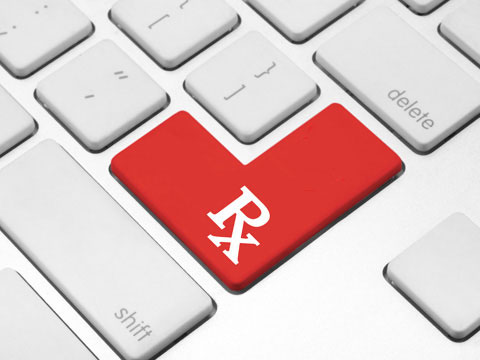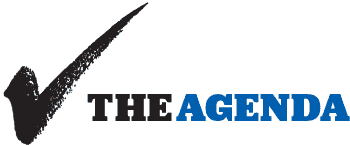Topic intro description here. Limited to 145 characters. Topic intro description here. Limited to 145 characters. Topic intro description here.
eHI Explains EPCS

EPCS Electronic Prescribing of Controlled Substances
What is e-prescribing?
E-prescribing (electronic prescribing) is a technological framework that allows medical practitioners to electronically write, then send prescriptions to a pharmacy. E-prescribing replaces handwritten prescription pads, faxes, and calling in prescriptions via phone. According to Surescripts data from their 2017 National Progress Report:
- 77% of ALL prescriptions are e-prescribed
- 90% of prescriptions for non-controlled substances are e-prescribed
- Only 21% of prescriptions for controlled substances (opioids, narcotics, etc.) are e-prescribed
Why is Electronic Prescribing of Controlled Substances (EPCS) important?
- EPCS allows for the security of electronic records, a reduction in fraud and abuse, and an improvement in patient safety
- EPCS positions pharmacies and providers to better share patient information by tracking the frequency, length of time, and dosages of patients using opioids
- The U.S. Drug Enforcement Administration (DEA) revised regulations to allow EPCS on a federal level in 2010. All states adopted the practice by 2015, but most did not have a mandate in place
Does EPCS help address prescription abuse? YES and New York is a model.
- In March 2016, EPCS was mandated for most doctors in the state of New York
- 97.8% of pharmacies are e-prescribing and 93.8% are EPCS enabled
- There was a 98% reduction in doctor shopping in the state
- There was a 70% reduction in prescription pad theft and loss
What are Prescription Drug Monitoring Programs (PDMPs) and why are they important?
- PDMPs are electronic databases that track controlled substance prescriptions in each state
- PDMPs can provide health authorities with real time information about prescribing and patient behaviors to facilitate nimble and targeted responses to the opioid crisis
What opioid legislations are pending as of 10/2/2018?
- H.R. 6, Substance Use-Disorder Prevention that Promotes Opioid Recovery and Treatment (SUPPORT) for Patients and Communities Act, draws on sixty-six bills that address opioid use prevention, recovery, and treatment and can affect electronic prescribing, prescription drug monitoring programs, and HIPAA laws, and include HR 5009, HR 3528, and HR 5801
- H.R. 6 sister legislation, S. 2680 The Opioid Crisis Response Act (OCRA)
- H.R. 5009. S581. Jesse’s Law requires drug addiction status to be added to all medical records
- H.R. 3528. Every Prescription Conveyed Securely Act requires all controlled substances prescribed by clinicians under Medicaid Part D to be electronically prescribed
- H.R. 5801. Providers Are Required To Note Experiences in Record Systems to Help In-need Patients (PARTNERSHIP) Act requires all states to establish prescription drug monitoring programs and healthcare providers to check the PDMP for the Medicaid patient’s prescription
Connecting your medical data could be the next big payoff
Connecting your medical data could be the next big payoff
An article focused on creating accessible and integrated patient data. This holistic approach fulfills value-based care goals and helps promote overall patient health and wellness.
The full article can be viewed at this link.
Enhancing Rural Population Health Care Access and Outcomes Through the Telehealth EcoSystem™ Model
Enhancing Rural Population Health Care Access and Outcomes Through the Telehealth EcoSystem™ Model
The article highlights the Telehealth EcoSystem™ model, a holistic cross-sector approach for socioeconomic revitalization, connectivity, interoperability and technology infrastructure development to address health equity for rural underserved communities. Two guiding frameworks, Community & Economic Development (CED) and Collective Impact, provided the foundation for the Telehealth EcoSystem™ model. Public and private organizational capacities are addressed by comprehensive healthcare and social service delivery through stakeholder engagement and collaborative decision-making processes. A focus is maintained on economic recovery and policy reforms that enhance population health outcomes for individuals and families who have economic challenges. The Telehealth EcoSystem™ utilizes an intranet mechanism that enables a range of technologies and electronic devices for health informatics and telemedicine initiatives. The relevance of the intranet to the advancement of health informatics is highlighted. Best practices in digital connectivity, HIPAA requirements, electronic health records (EHRs), and eHealth applications, such as patient portals and mobile devices, are emphasized. Collateral considerations include technology applications that expand public health services. The ongoing collaboration between a social science research corporation, a regional community foundation and an open access telecommunications carrier is a pivotal element in the sequential development and implementation of the Telehealth EcoSystem™ model in the rural southeastern region community.
The full article can be viewed below.
Presentation: Information Exchange and Data Transformation (INFORMED): An Integrated approach to big data analytics
Presentation slides from Sean Khozin, Associate Director, Oncology Center of Excellence, Director of INFORMED. From 9.6.18 eHI Artificial Intelligence and Machine Learning Executive Roundtable Meeting.
Considerations for Success - Patient Matching
Patient matching compares data sources from different health IT systems, doctors’ offices, and hospitals to decipher if they belong to the same patient. The process recovers data from health records and identifies commonalities based on personal traits, such as demographics, to find a “match.” Patient matching improves patient safety and clinical care by establishing continuity of care among patients with multiple records at one provider or across various providers. The patient matching process allows organizations to develop a complete record of the patient’s health history and medical care.
Our August Technology & Analytics Workgroup Meeting included executives from 4Medica and the Nebraska Health Information Initiative (NeHII) who suggested the following considerations for success when developing a patient matching solution:
- Is your enterprise-wide duplication rate below two percent?
- Does your current Master Patient Index solve all of your identity matching and resolution problems – across all data sources and locations within your organization?
- Do you feel that you are spending too many resources (money and human capital) to continuously clean up identities in your data sources?
- Do you currently use unlimited historical and clinical data enrichment available to help with more precise matching?
- Is your organization at risk by having duplicate identities?
Patient matching has raised fears about false matching, privacy, and consent. According to a survey from Black Book Research, around 33% of all denied claims are linked with inaccurate patient identification, which costs the average hospital $1.5 million and the U.S. healthcare system $6 billion annually. Implementing the appropriate patient matching steps will help your organization better serve patients, while saving money.
To build a 360-degree view of a patient:
- Share data transparently
- Promote informed patient-centric care coordination
- Segregate and identify clinical information from each data source to ensure most up to date information for a patient in real-time.
Press release on the patient matching collaboration between NeHII and 4Medica.
Annual Summit
Connecting Healthcare and Clinical Research: Workflow optimizations through seamless integration of EHR, pseudonymization services and EDC systems
Connecting Healthcare and Clinical Research: Workflow optimizations through seamless integration of EHR, pseudonymization services and EDC systems
In hospitals usually several systems are used which are often disconnected and an integrated workflow over system borders is often not supported. Frequent system changes, different authentications and error-prone transfer of relevant data are the consequence. We proposed a concept for seamless integration of a pseudonymization workflow into the domains of routine care and clinical research. Therefore, interfaces were established between EHR and EDC system with direct integration of a pseudonymization service. This integration facilitates the automatic registration of patients from the EHR and led to a significant reduction of execution time and elimination of transcription errors.
This accepted manuscript can be downloaded below.
Advisory Council on Social Determinants of Health Data
The vast majority of U.S. healthcare dollars and efforts are spent on providing direct medical care rather than addressing socioeconomic factors that impact patients’ health. In the wake of healthcare reform and further integration of value-based and population health payment models, it is vital that all stakeholders address SDOH in order to improve outcomes while lowering healthcare spending.
Blockchain for Healthcare
In today’s digital world, different systems interact with each other for data and information exchange. We expect each interaction / transaction between the systems to be secure and reliable. Blockchain is a new technology that promises an efficient, cost-effective, reliable, and secure system for conducting and recording any transaction without the need of middleman.
Crossing the Payer/Provider Chasm-Getting to Share Risk, Shared Data
The lack of "alignment" between providers and payers hampers integration of care and services and is a primary driver of our high healthcare costs.
Lynda Rowe of InterSystems reviews a recent NEJM Heath Catalyst study on the topic and outlines thoughts and hypothesis on how to “cross the chasm."


